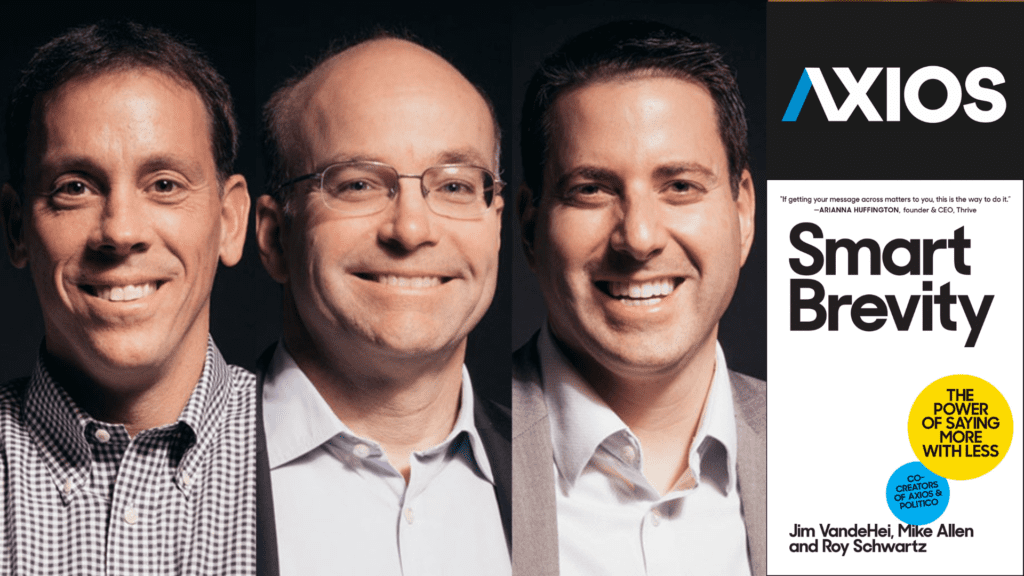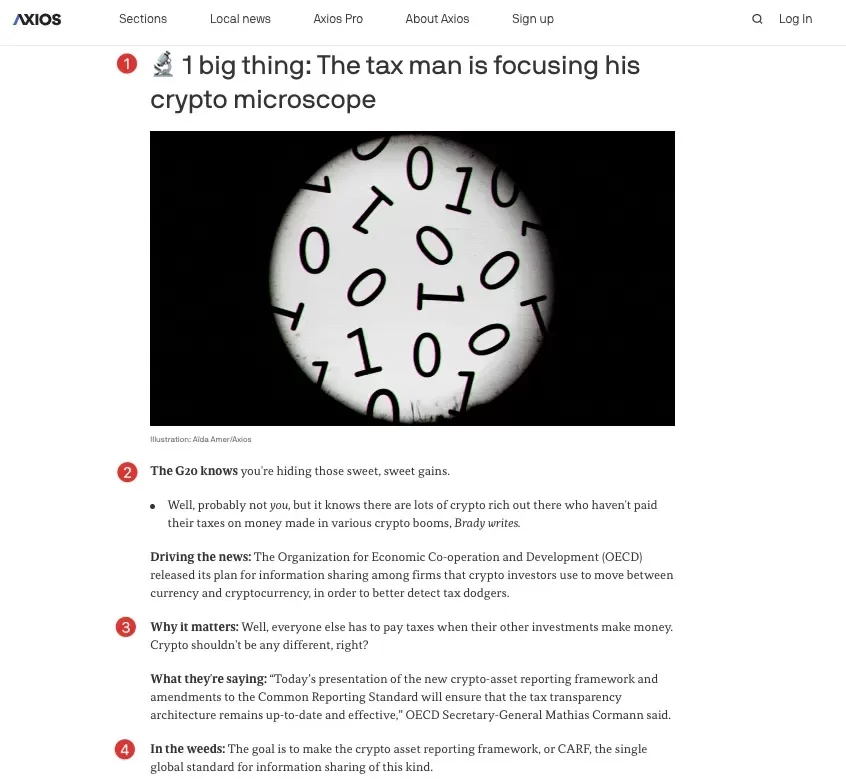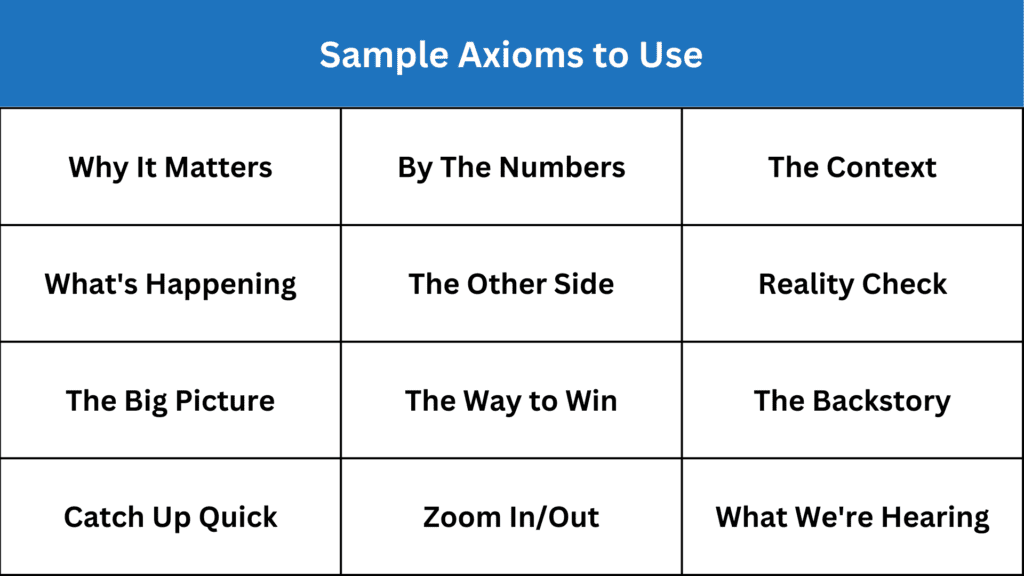“Smart Brevity” Is the Modern-Day Communication Bible

WHY IT MATTERS: Social media, smartphones, and the Internet shortened attention spans. Novels like War and Peace would never sell today. And yet, few of us have adapted our communication to this new reality.
BACKGROUND: Many of us were raised in schools that mandated essays at least X words or pages long. This social conditioning trained us that longer is better. But it's not. Shorter is better.
"We know everyone has less time, more options, endless distractions - yet we keep coughing up the same number of words. Or more. Written in the same way we have been writing for generations." -Jim VandeHei, Mike Allen, and Roy Schwartz
CATCH UP QUICK: After diving into readership data, the founders of media powerhouse Politico realized that-even on their best articles - 80 percent of readers weren't making it beyond the first page. After recovering from that initial ego hit, they decided there must be a better way.
- Jim VandeHei, Mike Allen, and Roy Schwartz founded Axios in 2016.
- The company was founded on one simple idea: smart brevity.
- Smart brevity = Producing content that is short, but not shallow
THE BASICS: Smart brevity can be whittled down to four components:
- A muscular "tease": Short headline (usually 6 words or less)
- One strong first sentence ("lede"): Your most snappy and memorable sentence
- Context ("Why it matters"): Explain WHY it's important
- The choice to learn more ("Go deeper"): Offer additional info for those who want to stay on the ride
Here's an example of what smart brevity looks like in action:

It's shorter. It's punchier. It's the right level of info to whet an appetite.
THE BOOK: Last month, VandeHei, Allen, and Schwartz published a snack-size book (28,000 words) to explain smart brevity to anyone looking to improve their writing. You can find the book here (affiliate link).
BY THE NUMBERS: To build their case for smart brevity, the authors provide a slew of jaw-dropping figures.
- "On average, we spend fewer than 15 seconds on most of the web pages we click. Here's another crazy stat: One study found that our brain decides in 17 milliseconds if we like what we just clicked. If not, we zip on."
- "We check our phones 344-plus times each day - once every 4 minutes, at least."
- "Roughly one-third of work emails that require attention go unread."
- "Most chapters of most books go untouched."
HOW IT IMPACTS YOU: Even if you don't identify as a "writer," you undoubtedly still find yourself writing dozens of important things every day. Work emails. Slack messages. Social media updates. Texts.
If you want to capture anyone's attention amidst the hurricane of hyperactivity and distractions, you need to change the way you write.
"Adapt to how people consume content - not how you wish they did or they did once upon a time. Then, change how you communicate, immediately." -Jim VandeHei, Mike Allen, and Roy Schwartz
WHAT THEY'RE SAYING: The authors offer countless tips. The essence: writers must say more with less and write in a conversational tone.
- "Learn to identify and trumpet ONE thing you want people to know."
- BLUF: Bottom line up front. (Put the most important info first.)
- Shrink paragraphs and add more section breaks and headers.
- Always use action verbs.
- Use more emojis. They capture attention. ?️
- Tell your story to a friend first. Then write what you said.
- No unnecessary words or context. "Just say it. Then stop."
"Brevity is confidence. Length is fear." -Axios
IDEAS TO TRY: Axios uses short headers to introduce each section of a story. They call these "axioms," and you'll see many of the same ones show up in their newsletters and articles. Consider using them in your writing.

HOW TO BEGIN: Start by incorporating this concept into a few of your messages. Give it a shot in your next LinkedIn update or Facebook post. See how people respond, then calibrate further from there.
"These are guardrails, not hard-and-fast, never-break-them rules. If you live by Smart Brevity, your communications will instantly be more memorable and powerful. But your aim is to inform, captivate, motivate a particular audience…The gold standard is always what's best for the audience - the structure that is clearest and most efficient for a reader whose attention is being pulled in a million ways." -Jim VandeHei, Mike Allen, and Roy Schwartz
REALITY CHECK: Can everything be written in this smart brevity format? No, but it's a great framework to keep in mind. Since reading the book, I've used its core principles in dozens of Slack messages, emails, and stories.
This article was written in loose accordance with the smart brevity formula. What did you think?
Want to become a stronger leader?
Sign up to get my exclusive
10-page guide for leaders and learners.



